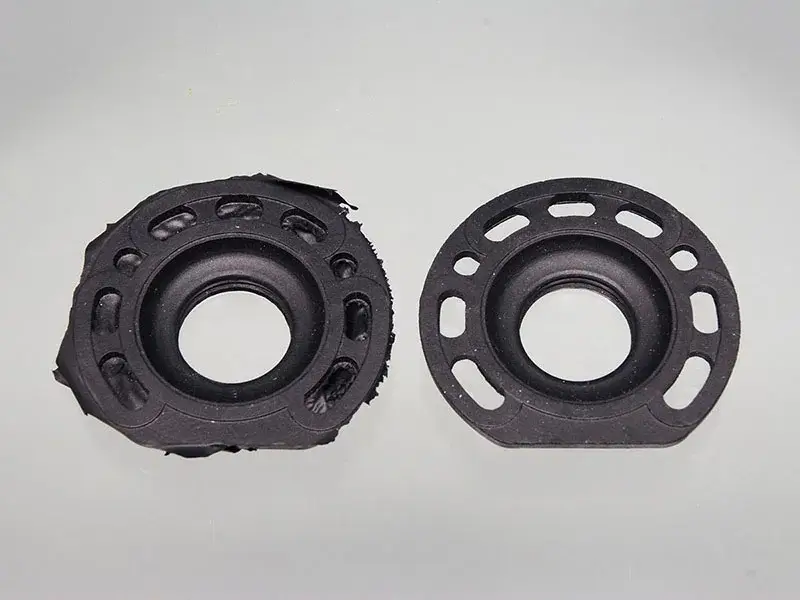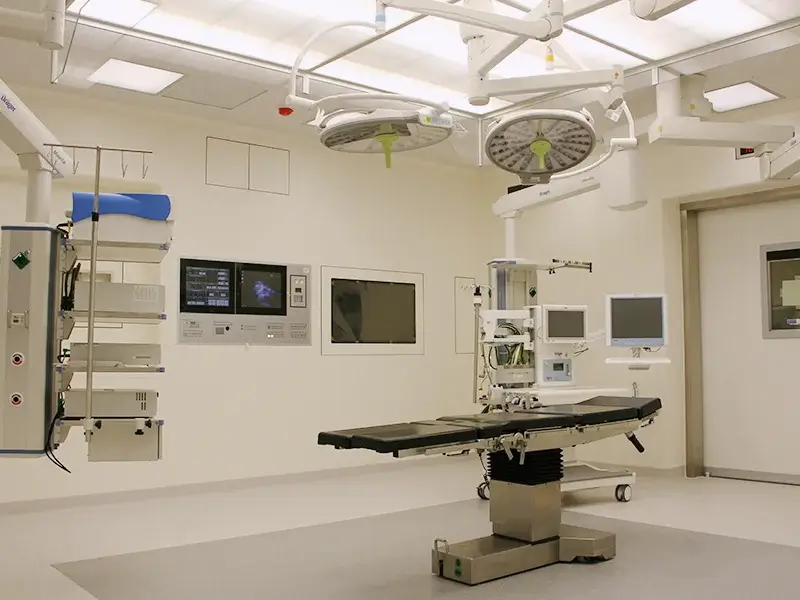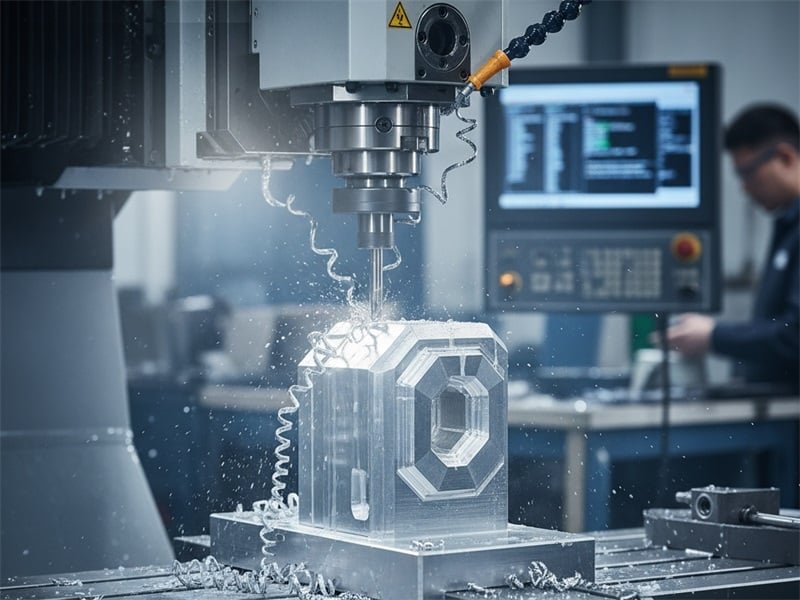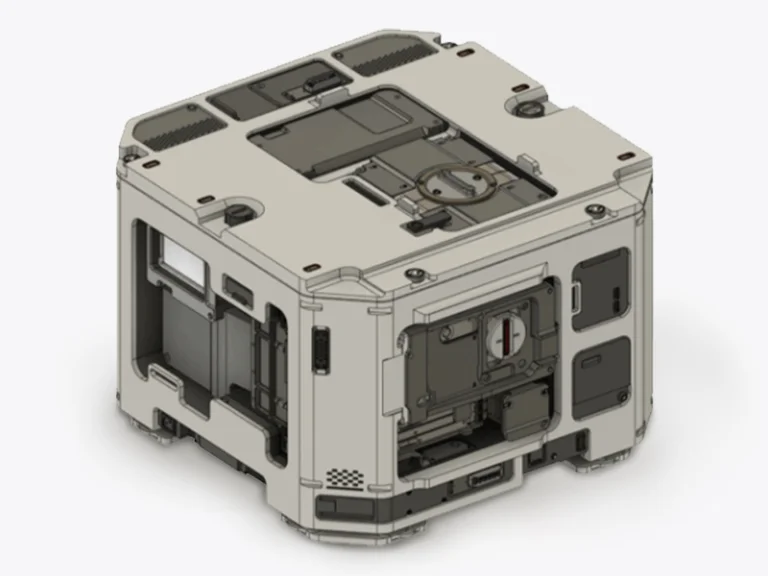
What is Large Part Injection Molding?
Large part injection molding is the process of producing custom molded plastic parts that exceed the capabilities of standard injection molding machines. This requires larger machines with higher clamping forces and shot sizes to handle bulky molds, with some machines reaching 8000 tons and a shot weight of 325 pounds. Typically, large injection molding uses molds requiring 500 tons or more of clamping force. The process starts with resin pellets that are heated and injected into molds designed for larger components. The key difference from standard injection molding is the size and complexity of the parts, which demand specialized equipment and techniques to maintain quality and efficiency. While a large part of injection molding focuses on bulky components, the same principles apply in small part molding, allowing precise, high-quality production for smaller, intricate components. Common large injection molded parts include automotive panels, pallets, containers, housings, and covers.Key Characteristics of Large Part Injection Molding
- Large Shot Volumes – To fill bigger molds efficiently.
- Longer Cooling Times – Thick or wide parts need controlled cooling.
- High Clamping Force – Ensures mold stays closed under high pressure.
- Complex Mold Design – For even flow and minimal defects.
- Reinforced Structure – Maintains part durability.
- Specialized Machines – Larger platen sizes and higher tonnage.
Choosing the Right Injection Molding Machine for Large Parts
Understanding Part Dimensions and Weight
Clearly define the size, weight, and complexity of the parts you intend to produce. Large parts typically require machines that can accommodate greater dimensions and heavier weights. For instance, many standard machines can only handle parts up to 4′ x 4′, while larger machinery is necessary for bigger components.Consideration Injection Machine Clamping Force
The clamping force is the pressure applied to keep the mold securely closed during the injection process. For injection molding large parts, a higher clamping force is needed to counteract the significant internal pressure generated by the molten plastic. Larger parts injection molding typically requires a large part injection molder with clamping forces ranging from 1,000 to 10,000 tons or more. Insufficient clamping force can lead to defects such as flash (plastic leaking from the mold cavity).Consideration Injection Machine Shot Size
The shot size is the maximum volume of plastic that the machine can inject in a single cycle. For large parts, the shot size must be large enough to fill the mold cavity entirely. Calculate the volume of the part plus the runners and sprues to ensure the shot size meets the demand. Consider a machine with at least 20% extra capacity to accommodate changes in part design or material. An injection molder with insufficient shot size may cause short shots (incomplete filling) and compromise part integrity.Consider Injection Mold Size and Platen Dimensions
The mold size must fit within the machine’s platen area (the flat surfaces that hold the mold in place). Large molds require machines with expansive platen dimensions. A mismatch between mold size and platen area can result in machine downtime or mold damage.Looking for Injection Machine Advanced Features for Large Part Molding
Multi-zone heating systems ensure uniform melting of plastic for large shot sizes. Servo-driven controls improve energy efficiency and precision during injection and clamping. Gas-assisted injection capability, ideal for producing lightweight, large parts with hollow sections.Looking for Large Injection Molding Parts? Choose Jiangzhi!
Large Part Injection Molding Process
Large part injection molding is similar to standard injection molding but specially adapted for very large or heavy plastic components. The main differences are:
- Bigger Machines & Higher Clamping Force: Large molds need stronger machines to prevent flashing or mold opening.
- Material Flow & Cooling Challenges: Molten plastic must travel longer distances, and thicker walls require longer, carefully controlled cooling to avoid warping.
- Process Adjustments: Multi-point gates, mold support, and sometimes gas-assisted injection are used to ensure part quality.
In essence, the steps of mold preparation, injection, cooling, and ejection are the same as standard molding, but scaled and optimized for size, weight, and complexity.
The Challenges of Large Part Injection Molding
From material flow to cooling strategies, a large part of injection molding meets a set of challenges.
1. Material Flow and Fill Challenges
One of the most significant challenges in large-part injection molding is ensuring proper material flow and complete cavity fill. As the size of the part increases, the distance the molten plastic must travel also increases, which can lead to uneven flow rates, pressure fluctuations, and temperature variations. This inconsistency can result in voids or incomplete filling of the mold cavity, compromising the integrity of the final product.
To mitigate this challenge:
- Choose materials with favorable melt flow properties.
- Optimize gate and runner designs to make smoother material flow.
- Consider the use of flow simulation software to predict and address potential flow issues.
2. Cooling Time and Temperature Control
Cooling is a critical phase in the injection molding process, especially for large parts. Larger parts require significantly longer cooling times compared to smaller components. Longer cooling times and varying cooling rates can lead to differential shrinkage and potential warping, distortion, and internal stresses as the part solidifies.
Effective cooling strategies, such as conformal cooling channels, are essential to mitigate these issues.
3. Challenge on Machine Size and Clamping Force
Injection molding large parts requires injection molding machines with significantly higher clamping force and shot size. The larger the part, the more pressure is needed to keep the mold closed and ensure the molten material is injected properly. Inadequate clamping force can lead to mold opening, material leakage, and compromised part quality.
To address this challenge:
- Optimize clamping force calculations based on material properties, part geometry, and injection pressure.
- Incorporate real-time monitoring systems to maintain a consistent clamping force during the molding process.
4. Structural Integrity and Defects
The increased size of large parts introduces risks related to structural integrity. Larger parts are more susceptible to internal stresses that can lead to cracking or deformation during manufacturing or use. Inconsistent material flow during injection can lead to visible sink marks on the surface of large parts, impacting their aesthetic quality and functionality.
5. Cycle Time Management Challenges
A large part of injection molding needs longer cooling times and precise temperature control. So the large part cycle time is significantly longer than the smaller componts’ injection molding cycle time. The longer cycles also result in increased energy consumption, raising operational costs and environmental impacts.
Finding the sweet spot between part quality and cycle time is crucial:
Leverage simulation tools to optimize cooling strategies and reduce cycle times without compromising part integrity.
6. Wall Thickness Challenges in Large Parts Injection Molding
The wall thickness of plastic parts has a great influence on plastic molded part quality. When the wall thickness is too thin, flow resistance increases, making it difficult for large and complex plastic parts to fill the cavity completely. Excessive plastic part wall thickness not only wastes raw materials but also increases the molding time for thermosetting plastics, which can lead to incomplete curing. For thermoplastics, thicker walls result in longer cooling times. Additionally, this can negatively affect the quality of the plastic parts being processed.
The minimum size of the processing wall thickness for plastic parts should meet the following requirements: it must have sufficient strength and stiffness; it should be able to withstand the shock and vibration from the demolding mechanism during ejection; and it must endure fastening forces during assembly.
Conclusion
A large part of injection molding is a crucial process in modern manufacturing. In this post, we’ve covered the process and challenges of large part injection molding. As noted, while the basic injection molding steps remain the same, large parts require specialized attention to factors like machine selection, mold design, and cooling systems.
To ensure success, partnering with an experienced manufacturer is crucial. Jiangzhi, a leading large part injection molding company in China, offers the expertise and resources needed to tackle these challenges. With advanced technology, large-scale production, and a strong quality management system, Jiangzhi provides large part plastic injection molding solutions that guarantee efficient, cost-effective, and high-quality results.
FAQs About Large Parts Injection Molding
The largest plastic injection molding machine currently recognized is the Milacron C-8000, which boasts an impressive clamping force of 8,000 tons. It can produce the injection molding large flat parts. The largest injection molded part currently recognized is a large plastic part measuring 160 inches by 114 inches.
Injection molds are typically made from a variety of materials, each chosen based on specific requirements such as durability, cost, and the type of parts being produced. The common materials used for injection molds are tool steel, aluminum, stainless steel, composite materials, thermoplastic.
Part design is critical in large part injection molding. Features like wall thickness, draft angles, and rib design should be optimized to ensure that the part can be molded efficiently. Even wall thickness is especially important to avoid issues like warping, sink marks, and long cooling times.
Injection molding can produce parts from a few grams up to 10+ kg, limited mainly by machine capacity, mold size, and material flow.





